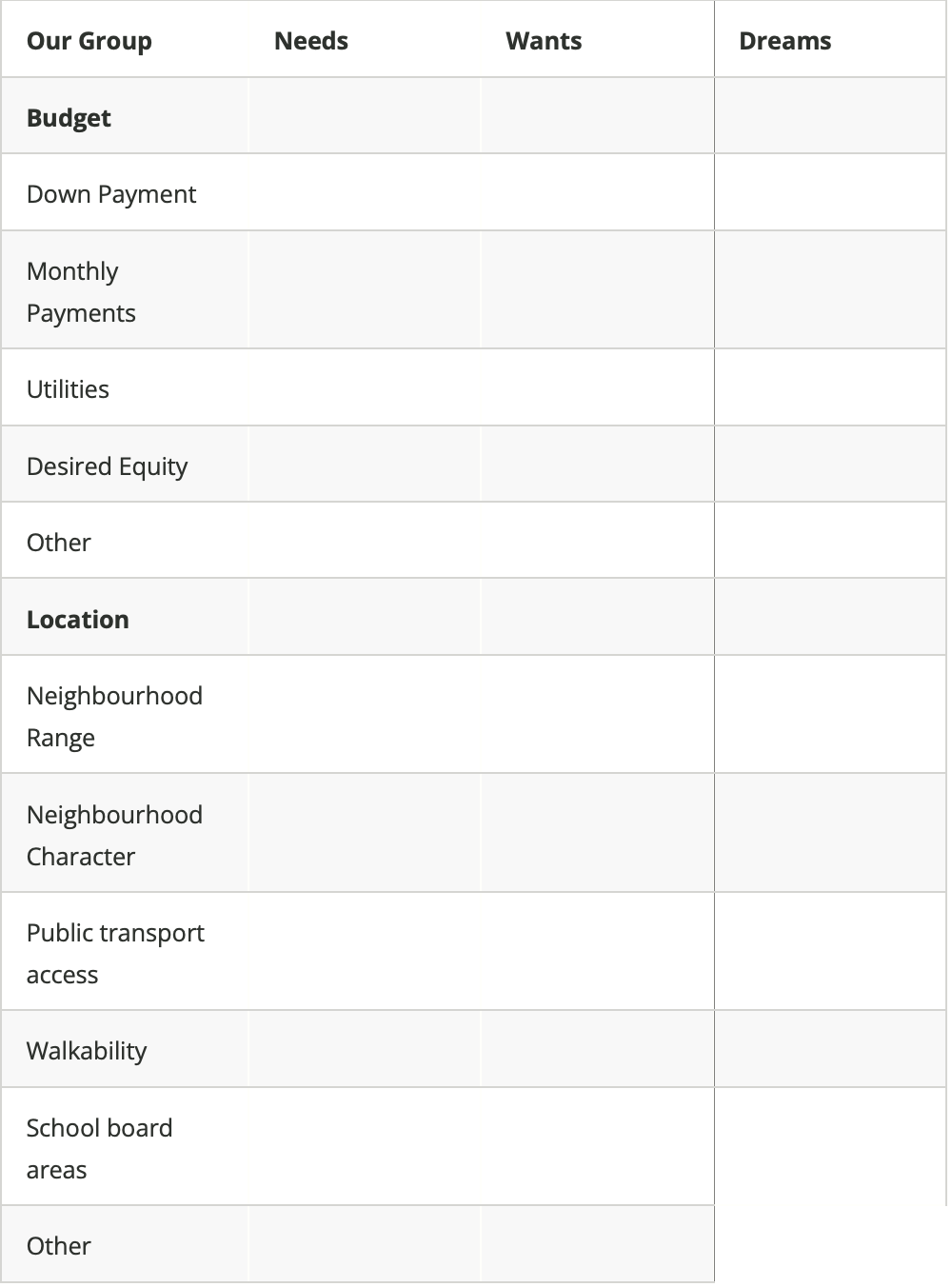Designing Your Dream Home: How to Sketch Your Ideal Home

Now that you have a clearer sense of your own needs, wants, and dreams for co-purchasing a home and have found a group of people who share your vision, it’s time to assess and discuss your compatibility. The more detailed and clear your ideas are, the easier they will be to convey to others.
Comparing Your Co-Ownership Visions
Using your answers from your individual needs, wants, and dreams, it’s time to compare your responses with your group. Start with your needs, then move on to your wants, and finally, explore your dreams. This stage is all about open and honest brainstorming. Use the table below as a practical tool to guide your discussions and help visualize each person’s priorities. It’s a space to thoughtfully consider your own needs and wants in the context of the group. Depending on what works best for everyone, you might need one extensive discussion or several shorter sessions to cover everything. As a group, you’ll decide how much time you need to find common ground.

Embrace the Differences
During these discussions, you may find differences between your vision and those of your purchasing group. This is perfectly normal and doesn’t necessarily mean your co-ownership plans are doomed. In fact, discussing compromises and finding ways to reconcile differences can strengthen your group's commitment and problem-solving skills. You might also uncover certain incompatibilities that are challenging to overcome, and that's okay too.
Navigating Compromises and Incompatibilities
Once you’ve compared your visions and had significant discussions with your purchasing group, it's time to address any areas where you don’t align perfectly. Consider the following:
- Are there wants or dreams that could be adjusted or compromised on?
- Are there needs that conflict with someone else’s needs?
Prioritize these areas for further, candid discussions. Some issues may be resolved with a bit of creative thinking and group problem-solving. Others might not be resolvable, in which case, you may need to reconsider your compatibility as co-purchasers. Remember, it’s better to identify these potential hurdles now rather than later in the process.
Finding Harmony in Diversity
Remember, some of the best cooperative living arrangements start with individuals who weren’t initially close friends. They don’t expect to be best friends but rather begin by acting as responsible members of a purchasing group from the start.
Some of the best cooperative living arrangements are with former strangers. Because they don’t expect to be best friends, they act as responsible members of a purchasing group from the start.
— Lesli Gaynor, Co-Founder of Husmates
Before Moving Forward
Before you move on to the next step, make sure you review the summary of Finding Your Purchasing Group to ensure you’re ready to proceed.
How Do You Establish Your Purchasing Group?
Click on the sections below to learn more.
- Kickstarting Your Co-Ownership Adventure: How to Find and Build Your Ideal Home Team
- Envisioning Your Perfect Co-Ownership: What Do You Truly Want?
- Thinking Outside the Box: Creative Ways to Form Your Co-Ownership Group
- Connecting with Co-Owners: How to Find Your Ideal Group
- Designing Your Dream Home: How to Sketch Your Ideal Home
- Moving Forward Together: Summary and Next Steps for Your Co-Ownership Group
